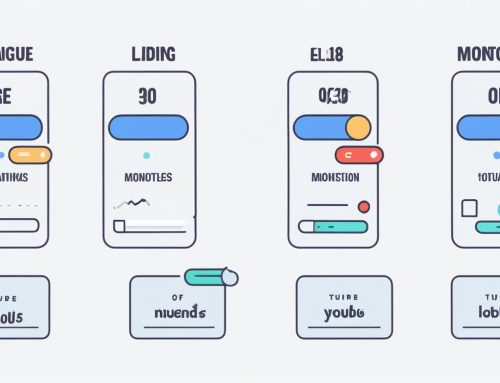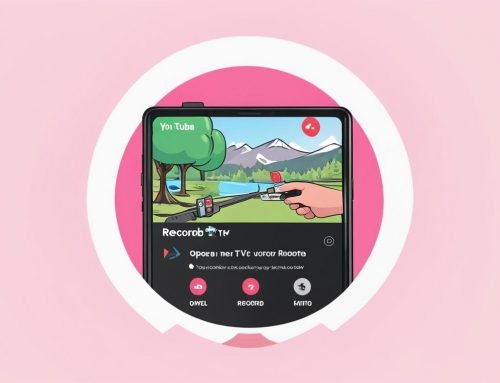Twitch is one of the largest platforms for live video streaming, attracting millions of viewers and content creators worldwide. However, with YouTube having a user base 20 times larger than Twitch, many streamers are looking for ways to expand their reach and increase their audience. One effective strategy is to export Twitch streams to YouTube, a video-sharing platform that offers greater discoverability and monetization opportunities.
By exporting Twitch streams to YouTube, content creators can tap into YouTube’s massive audience and maximize their exposure. YouTube’s algorithm is designed to help viewers discover new content based on their preferences, making it easier for new creators to gain visibility. This means that by exporting Twitch streams to YouTube, streamers have a better chance of attracting new viewers and growing their viewer base.
Key Takeaways:
- Exporting Twitch streams to YouTube can help streamers reach a larger audience and grow their viewer base.
- YouTube’s algorithm makes it easier for viewers to discover new content compared to Twitch.
- Exporting Twitch streams to YouTube provides additional monetization opportunities for content creators.
- Uploading Twitch streams to YouTube allows followers to watch pre-recorded streams at their convenience.
- YouTube’s powerful search engine increases the chances of content being discovered by new viewers.
Quick Links:
Buy YouTube Views ▸ Buy YouTube Comments ▸ Buy YouTube Likes ▸ Buy YouTube Subscribers
Twitch vs. YouTube: The Differences
When it comes to live streaming and video content, two major players dominate the scene: Twitch and YouTube. While both platforms offer opportunities for creators to engage with their audiences, there are distinct differences that set them apart.
Firstly, Twitch is primarily focused on live-streaming video games, making it the go-to platform for gamers and esports enthusiasts. On the other hand, YouTube is a video-sharing platform with a wide variety of content, ranging from music to vlogs, tutorials, and more. This diverse content landscape on YouTube attracts users from various niches, creating a vast and diverse user base.
YouTube also boasts a larger user base compared to Twitch, with billions of monthly active users. This expansive reach provides new streamers with more potential for growth and exposure. In contrast, Twitch’s discoverability algorithm is less effective than YouTube’s, making it more challenging for new creators to be found by their target audience.
YouTube’s algorithm places a strong emphasis on recommending new and relevant content to its users, making it easier for newbies to promote their videos and gain visibility. This algorithmic advantage gives YouTube streamers a head start in reaching a wider audience compared to Twitch streamers.
Furthermore, YouTube’s algorithm is designed to showcase high-quality content, ensuring that users have access to videos that meet their interests and preferences. This emphasis on quality appeals to content creators who prioritize producing polished, professional videos. In contrast, Twitch caters more to creators with established and larger audiences, with features tailored to enhance the live-streaming experience.
Overall, the differences between Twitch and YouTube lie in their primary focuses, user bases, discoverability algorithms, and content quality. These distinctions impact engagement levels and growth opportunities for streamers on both platforms.
Key Differences at a Glance:
| Twitch | YouTube |
|---|---|
| Live-streaming platform primarily focused on video games | Video-sharing platform with a wide variety of content |
| Smaller user base compared to YouTube | Larger user base with billions of monthly active users |
| Less effective discoverability algorithm | Strong algorithm for recommending new and relevant content |
| Caters more to creators with established and larger audiences | Offers more growth potential for new streamers |
| Emphasis on live-streaming experience | Emphasis on showcasing high-quality content |
Understanding these differences is crucial for streamers who are looking to maximize their engagement and growth potential.
Why Export Twitch Streams to YouTube?

There are several reasons to export Twitch streams to YouTube. Firstly, YouTube has a much larger audience than Twitch, allowing creators to reach a broader viewership. With over 2 billion monthly active users, YouTube provides a vast potential audience for streamers to showcase their content and gain new followers.
Additionally, uploading Twitch streams to YouTube can provide an additional source of income for content creators. YouTube’s monetization options, including ads, sponsorships, and the YouTube Partner Program, offer streamers various ways to generate revenue from their videos. By diversifying their income streams, streamers can achieve financial stability while doing what they love.
One of the major benefits of exporting Twitch streams to YouTube is that it allows followers who are unable to attend live sessions to watch the pre-recorded streams at their convenience. By making their content available on-demand, streamers can accommodate different time zones, work schedules, and personal commitments, ensuring that their audience never misses out on the action.
Furthermore, uploading Twitch streams to YouTube can help drive YouTube followers to Twitch streams, boosting live stream viewership. By cross-promoting their content across platforms, streamers can tap into YouTube’s massive user base and attract new viewers who may become regular Twitch stream attendees.
Uploading Twitch streams to YouTube not only increases exposure but also provides an opportunity for new viewers to discover the content they are searching for. YouTube’s powerful search engine algorithm enhances discoverability, making it easier for streamers to attract an audience who may be interested in similar content.
To further illustrate the benefits, here is a table comparing Twitch and YouTube in terms of audience size, income potential, on-demand viewing, and cross-platform promotion:
| Twitch | YouTube | |
|---|---|---|
| Audience Size | 140 million monthly active users | 2 billion monthly active users |
| Income Potential | Limited monetization options for new streamers | Multiple revenue streams, including ads, sponsorships, and YouTube Partner Program |
| On-Demand Viewing | Twitch VODs available but limited accessibility | YouTube provides on-demand viewing, allowing followers to watch streams at their convenience |
| Cross-Platform Promotion | Difficult to drive Twitch followers to YouTube | Exporting Twitch streams to YouTube helps in cross-promotion, attracting new viewers to Twitch |
As the table demonstrates, exporting Twitch streams to YouTube offers numerous advantages for both streamers and their audience. The combination of YouTube’s vast viewership, income potential, on-demand viewing, and cross-platform promotion makes it a compelling choice for streamers looking to expand their reach and maximize their streaming efforts.
The Power of YouTube Search Algorithm
YouTube’s search algorithm plays a crucial role in the discoverability of content. When a streamer uploads their Twitch streams to YouTube, they gain access to YouTube’s powerful search engine, allowing their videos to be found by users searching for relevant content. This increased visibility can lead to organic growth and attract new viewers who may not have discovered their streams otherwise.
The YouTube search algorithm takes into account various factors, such as video titles, descriptions, tags, and user engagement, to recommend and rank videos. By optimizing these aspects, streamers can increase their chances of appearing in search results and reaching a wider audience.
How to Upload Twitch Streams to YouTube
If you want to expand your audience and reach more viewers, uploading your Twitch streams to YouTube is a great way to do it. By exporting your Twitch streams to YouTube, you can take advantage of YouTube’s larger user base and powerful search engine, increasing the discoverability of your content. Here’s a step-by-step process to help you upload your Twitch streams to YouTube:
- Enable the Video on Demand (VOD) feature on Twitch: Before you can export your streams, make sure you have the VOD feature enabled on your Twitch account. This feature allows you to store past broadcasts and engage with your audience even when you’re not live.
- Link your Twitch account to your YouTube account: To start the export process, you’ll need to link your Twitch account to your YouTube account. This connection allows for seamless transfer of your streams from Twitch to YouTube.
- Select the Twitch streams you want to export: Once your accounts are linked, you can choose the specific Twitch streams that you want to export to YouTube. Select the streams that you believe will resonate with YouTube viewers and attract a wider audience.
- Fill in the necessary details: Before exporting, make sure to provide the necessary details for your YouTube video. This includes the video title, tags, description, and any other relevant information. These details will help viewers discover and understand your content.
- Start the export process: After filling in the details, initiate the export process. This may take some time depending on the length and size of your streams. Once the export is complete, your Twitch streams will be available on YouTube for a larger audience to enjoy.
By following these steps, you can easily upload your Twitch streams to YouTube and tap into the platform’s vast user base. Remember to optimize your video details and promote your YouTube content to maximize your viewership and engagement.
Benefits of Twitch VODs and YouTube for Streamers
Twitch VODs and YouTube offer numerous advantages for streamers, enhancing their reach and opportunities for growth. Let’s explore the benefits of utilizing both platforms:
“Twitch VODs allow followers to watch past streams and highlights, keeping them engaged even when the streamer is offline. This helps in retaining and attracting regular viewers.”
Twitch VODs provide a valuable resource for streamers to showcase their previous streams and highlights, allowing followers to catch up on missed content and relive memorable moments. This feature keeps the audience engaged and connected, even when the streamer is not actively broadcasting. By providing on-demand access to past streams, streamers can retain existing viewership and attract new dedicated fans.
In addition to Twitch VODs, leveraging YouTube as a streaming platform can greatly benefit streamers:
“YouTube provides a platform with a larger user base where streamers can promote their content and potentially reach a wider audience.”
YouTube has an extensive user base that is approximately 20 times larger than Twitch. By utilizing YouTube as a platform, streamers can tap into this larger audience and potentially attract new viewers who may not be active on Twitch. With its robust search algorithm and discovery features, YouTube offers streamers enhanced visibility and the chance to reach a wider audience with their content.
An additional advantage of utilizing both Twitch and YouTube comes from exporting Twitch streams to YouTube:
“Exporting Twitch streams to YouTube allows for additional revenue streams and monetization opportunities. It also helps in showcasing stream content to potential new viewers, driving them towards Twitch streams.”
By exporting Twitch streams to YouTube, streamers can diversify their revenue streams and take advantage of the monetization opportunities offered by both platforms. YouTube’s monetization features, such as ad revenue and sponsorships, can complement the revenue generated from Twitch. Furthermore, showcasing stream content on YouTube can attract potential new viewers who may then be directed towards the streamer’s Twitch channel, increasing live stream viewership and engagement.
To summarize, the combination of Twitch VODs and YouTube provides streamers with the benefits of engaging their audience even when offline, reaching a wider user base, and unlocking additional revenue streams. Integrating both platforms into a streamer’s content strategy can greatly enhance their visibility and success in the streaming ecosystem.
How to Monetize Twitch Streams
Twitch offers various monetization options for streamers, allowing them to generate income from their content and audience support. Whether you’re a beginner or an established streamer, Twitch provides opportunities to earn money from your streams.
Twitch Affiliate Program
The Twitch Affiliate Program is designed for beginner streamers looking to monetize their streams. This program provides revenue share based on video views, allowing streamers to earn income as their audience grows. To become a Twitch Affiliate, streamers must meet specific requirements, such as streaming for a certain number of hours and having a minimum number of followers. Once accepted, streamers can start earning through various monetization features.
Twitch Partner Program
The Twitch Partner Program is an advanced monetization option for established streamers with substantial viewership. Being a Twitch Partner comes with additional benefits and perks, such as priority access to new features, custom emotes, and revenue share opportunities. Streamers can apply to become a Twitch Partner and unlock more ways to monetize their streams. However, the requirements for the Partner Program are more stringent than the Affiliate Program, as it focuses on streamers who have already built a dedicated and engaged audience.
Multiple Monetization Options
Once you’re part of the Twitch Affiliate or Partner Program, you can explore various ways to monetize your streams:
- Twitch Subscriptions: Viewers can subscribe to your channel, providing a recurring monthly income. Subscribers also enjoy benefits such as ad-free viewing and exclusive emotes.
- Twitch Bits: Streamers can receive “Bits” from viewers, which are virtual currency that can be purchased and used to support their favorite streamers. Streamers earn a percentage of the revenue from Bits.
- Video Game Sales: If you have a game developer or publisher role on Twitch, you can earn a share of revenue from sales made through your Twitch channel.
- Donations: Viewers can donate directly to streamers as a way to show support and appreciation. These donations can be a significant source of income, especially for streamers with a dedicated fan base.
- Ad Revenue: Twitch displays ads during streams, and streamers receive a portion of the ad revenue from these advertisements.
By leveraging these monetization options, streamers can earn money from their Twitch streams while building and nurturing their communities.
| Monetization Option | Description |
|---|---|
| Twitch Affiliate Program | Revenue share based on video views, available to beginner streamers. |
| Twitch Partner Program | Advanced monetization option for established streamers with additional benefits and perks. |
| Twitch Subscriptions | Recurring monthly income from viewers who subscribe to your channel. |
| Twitch Bits | Earnings from virtual currency purchased by viewers to support their favorite streamers. |
| Video Game Sales | Revenue share from game sales made through your Twitch channel (for game developers/publishers). |
| Donations | Direct contributions from viewers as a form of appreciation and support. |
| Ad Revenue | Portion of the revenue generated from ads displayed during streams. |
Streaming on Twitch and YouTube Simultaneously
Streamers have the option to stream on both Twitch and YouTube simultaneously through the practice of multistreaming. This powerful feature allows content creators to expand their reach and exposure across both platforms, maximizing their potential to attract viewers from different audiences. By broadcasting on both Twitch and YouTube, streamers can increase their chances of growing a dedicated following and fostering viewer engagement.
Utilizing the multistreaming feature on Twitch not only enhances streamer visibility but also provides valuable opportunities for new viewers to discover their content. Streamers can tap into the vast user bases of both platforms, leveraging the unique advantages each offers. While Twitch may offer a more focused community and interactive live chat experience, YouTube’s powerful search engine and expansive audience provide exposure to a wider pool of potential viewers.
It is important, however, to consider the terms of service and guidelines of each individual platform when multistreaming. As both Twitch and YouTube have their own specific policies and regulations, streamers must ensure compliance and adhere to the rules of each platform to maintain a positive streaming experience for themselves and their viewers.
Read More
- Enable Memberships on YouTube: Easy Guide
- Quick Guide: Embed a YouTube Video on Twitter
- How to Edit Twitch Videos for YouTube: Simple Steps
- Step By Step Guide: How to Download a Private YouTube Video
- How to Disable YouTube Shorts – Process Explained
- Clearing Up Space: How to Delete Shows on YouTube TV
- Erase YouTube TV Recordings Easily | Step By Step Guide
- Share with Ease: How to Copy Your YouTube Channel Link
- How To Check Your Messages on YouTube: Easy Guide



